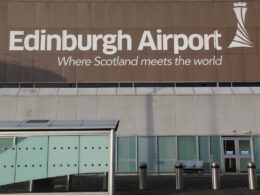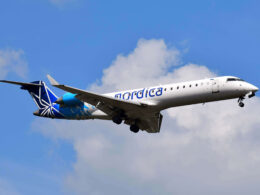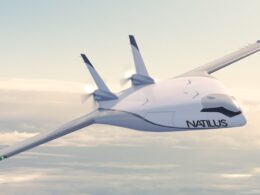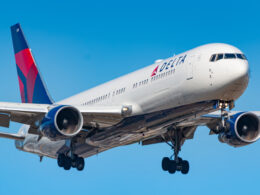On the first days of March 2020, the aviation leasing market was still expecting to reach $285.5 billion worth by 2026. Then, COVID-19 pandemics brought the aviation industry to a standstill. The consequential U-turn of aircraft demand paralyzed aircraft trading, accelerating changes of aviation leasing business.
Anyone Need a Spare Plane?
While COVID-19 pandemic continues to sweep through the world, Aviation leasing insiders almost unequivocally agree that the industry is facing a marathon of problems rather than a sprint.
International flights are down by 80%, while domestic ones remain at approximately 50% of the 2019 levels. The forced-tranquility of air traffic brought together significant changes to global fleet composition.
Several high-profile airlines, including British Airways or Qantas Airways, have already announced plans to send their Boeing 747 fleets to early retirement. Lufthansa (LHAB) (LHA) reportedly plans to follow the example, too. Similar fate fell on another famous double-decker, the Airbus A380. For instance, Air France decided to retire the superjumbo from its fleet completely, while even the type’s most loyal customer Emirates is cutting some of the wide-bodies from its fleet.
The International Civil Aviation Organization (ICAO) has estimated that the active fleet of narrow-body aircraft fell by 59.5% in July 2020. If in 2019 there were over 13,500 narrow-bodies soaring the skies, now only around 5,500 planes are utilized. The situation is even more drastic for the wide-body fleet, which took a 75.1% dive and now stands at mere 1,106 aircraft.
In other words, there are up to 11,408 aircraft in the world for which their owners have no use for at the moment. Sure, the number likely includes the planes that are repurposed for cargo operations, scrapped for parts or otherwise retired from service forever. Still, one can suspect that the better part of those 11K airplanes are still gathering dust as their owners await the travel demand to pick up.
The surplus of task-less planes translates into bad news for aviation leasing ‒ the industry that specializes in supplying planes for airlines.
A Lessor’s Dilemma
The changing enthusiasm for new aircraft intake is well reflected in manufacturer’s order books. Both airlines and lessors reacted to the crisis by reviewing their upcoming deliveries, choosing to either defer or completely cancel the orders. For instance, the top five global lessors have canceled almost 200 aircraft orders (and postponed at least 75), Cirium estimated in August 2020.
When explaining his company’s rather sizable cancellation of 30 Boeing 737 MAX aircraft orders, BOC Aviation Chief Executive Robert Martin gave a clear answer why one option could be prevailing over another. Instead of postponing their MAX arrivals, BOC Aviation chose to cancel. “That possibility was open to us but we don’t have unlimited capital,” Martin told Reuters.
The limits of capital has become a mantra in the industry, one that lessors are well familiar with themselves. While their passenger carriers remain grounded for several months now, cash-strapped airlines have approached leasing companies with contract renegotiation requests. So far, lessors are seemingly responding to these requests with a level of understanding, even if that understanding is traded off for some other benefits, like longer extensions of a lease. After all, what is the point of taking an aircraft back if there is nowhere to place it?
Changes in Aircraft Leasing Market
So far, the dominating solution in the market has been lease deferrals. For instance, U.S.-based Air Lease Corporation (ALC) revealed that it had granted 59% of its customers lease payment deferrals. ALC’s example is a conservative one, as some lessors have reported up to 100% of their airline clients asking for rent “holidays”.
“Lessors are trying their best to keep their aircraft on lease and avoid any early return to avoid storage fees, insurance costs. If the cost of the lease is not paid, it is [still – ed. note] better to keep aircraft with an airline and hope the situation will improve soon,” explained Francesco Baccarani, VP Technical at SGI Aviation, during AIR Convention Digital Week 2.0.
While lease deferrals remain the dominant way in which leasing companies lend a helping hand for suffering air carriers, industry insiders have observed never-heard-of solutions arising as well. “We see lessors do out of the box things to keep airlines running,” observed Yarin Spivak, EL Al Israel Airlines Head of Fleet Management and Aircraft Acquisitions on September 16, 2020.
One of these “out the box” examples is the pay-per-hour pricing model, now applied to aircraft lease costs. According to Baccarani: “If you don’t fly the aircraft, you don’t pay lease. If you fly the aircraft, you pay the lease based on how much you fly. From a lessor’s perspective, that it is still better than nothing.”
However, the “we are all in this together” mentality also has its limits and for lessors, some straws are becoming the final ones. In early September 2020, two leasing companies, on separate occasions, turned to courts and sued their respective clients. The reasoning behind litigations revolves around alleged breach of obligations of aircraft lease agreements and a default on rental payment.









